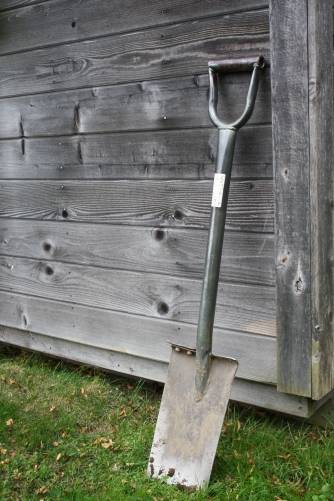 It’s true that springtime is when most people get excited about gardening. I succumb to this as much as anyone –maybe even more so. Starting seeds and making big plans for the gardens is what spring is all about! But for digging and dividing and moving plants, there’s no time like the present. Yes, fall is THE best time to dig plants in my book. Because the weather is cooler and the days are shorter, there is rarely a danger of drought. (Cool weather is also pleasant for the gardener.) Here in coastal Rhode Island, mild fall weather allows transplants to establish good root systems before the ground freezes. The plants won’t need to be watered through the spring and summer when I am busy with a million other things. And speaking of a million other things, that’s another good reason to dig in the fall. Spring is just TOO BUSY. Seeds. Weeds. Plant Sale!
It’s true that springtime is when most people get excited about gardening. I succumb to this as much as anyone –maybe even more so. Starting seeds and making big plans for the gardens is what spring is all about! But for digging and dividing and moving plants, there’s no time like the present. Yes, fall is THE best time to dig plants in my book. Because the weather is cooler and the days are shorter, there is rarely a danger of drought. (Cool weather is also pleasant for the gardener.) Here in coastal Rhode Island, mild fall weather allows transplants to establish good root systems before the ground freezes. The plants won’t need to be watered through the spring and summer when I am busy with a million other things. And speaking of a million other things, that’s another good reason to dig in the fall. Spring is just TOO BUSY. Seeds. Weeds. Plant Sale!
My tool of choice for this work is a solid steel spade. I used to think this spade was ridiculously heavy. But if it’s nice and sharp (I like to sharpen ALL my tools), then the weight of the spade does half the work for you. Digging is not always easy but can be oh- so- satisfying!
 So this week, with the help of Dr. Maynard’s PLS 350 class (Herbaceous Garden Plants), I will be digging up much of the sunny border in the main garden. This renovation is sorely needed! It will invigorate the plants, loosen the soil, and reestablish the appearance of the garden. Plants do move themselves, into or out of the sun, over a few years, and the original design gets lost. I’m looking forward to replanting the border so that it is accessible from the back — eliminating the need to (oh no!) step in the garden to tend the plants. Soil compaction makes it hard for water and air to reach plant roots, reducing growth and vigor, and favoring the growth of weeds.
So this week, with the help of Dr. Maynard’s PLS 350 class (Herbaceous Garden Plants), I will be digging up much of the sunny border in the main garden. This renovation is sorely needed! It will invigorate the plants, loosen the soil, and reestablish the appearance of the garden. Plants do move themselves, into or out of the sun, over a few years, and the original design gets lost. I’m looking forward to replanting the border so that it is accessible from the back — eliminating the need to (oh no!) step in the garden to tend the plants. Soil compaction makes it hard for water and air to reach plant roots, reducing growth and vigor, and favoring the growth of weeds.
Digging, dividing, and moving everything is a big job! The garden won’t necessarily look great this fall, but just give it a little time…by spring it will be beautiful!

















